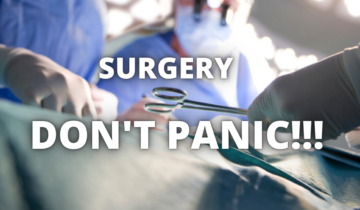
We often hear the term calcification. Calcification in the knee, spine, heel, and other areas is commonly mentioned.
WHAT IS CALCIFICATION?
Calcification refers to the growth of new bone on the surface of existing bone due to calcium deposits. The medical term for this is osteophytes. Bone calcification can be caused by several factors, but one of the main causes is joint damage. This condition is marked by joint inflammation due to the thinning of cartilage at the ends of bones, and it is a sign of osteoarthritis.
Sometimes, calcification doesn’t cause any symptoms and can go undetected for years. People may only find out they have it after getting an X-ray.
In some cases, calcification causes pain and stiffness in joints such as the knees, heels, and spine. When it occurs in the spine, it may also lead to pinched nerves.
Calcification in the Knee
In the knee joint, calcification is a sign of joint damage, specifically damage to the cartilage. While the calcification itself might not be painful, it often causes joint stiffness.
If the pain becomes bothersome and does not improve with conservative treatment, a total knee replacement surgery might be necessary. During surgery, the calcified bone is removed and the damaged cartilage is replaced with an implant. This can significantly reduce joint pain. Surgery is only considered for severe cases that do not respond to non-surgical methods.
Calcification in the Spine
Calcification can also occur in other parts of the body.
If it develops in the spine, it may cause stiffness in the back or neck. If the only symptom is stiffness, surgery is usually not needed.
However, if it compresses a nerve and causes sciatica (pain radiating down the leg) or pain radiating to the arms, then surgery may be needed—especially if the pain does not improve with medication.
Calcification in the Heel
Calcification is also common in the heel. The heel is one of the most frequent sites for this issue. It is usually a sign of inflammation in a ligament in the foot called the plantar fascia—a condition known as plantar fasciitis. This problem can often be treated with stretching exercises for the calf and plantar fascia, along with wearing shoes that have soft cushioning.
If symptoms don’t improve, more invasive treatments may be required.
HOW TO DETECT CALCIFICATION ON US
An X-ray is the easiest way to detect calcification. If there’s suspicion of a pinched nerve in the spine, an MRI scan may be needed to detect nerve compression that an X-ray might not show.
If you have calcification, try not to worry too much. It is a normal part of aging in the joints.
CAN CALCIFICATION BE CURED?
Calcification does not go away on its own. It may grow or worsen over time, but it does not shrink or disappear. However, it doesn’t always cause problems. The pain may reduce or even disappear even if the calcification remains.
MANAGING CALCIFICATION
If you suspect you have calcification, here are a few ways to relieve the symptoms:
Maintain a Healthy Weight
Excess weight puts pressure on the joints, which can worsen calcification. Try to achieve and maintain a proportional body weight.
Maintain a Healthy Weight
Excess weight puts pressure on the joints, which can worsen calcification. Try to achieve and maintain a proportional body weight.
Exercise Regularly
Strengthening the muscles around the joints can make the joints more stable, reducing the severity of osteoarthritis. Muscles can be strengthened through regular exercise.
Make sure the exercise you do matches your ability and condition. Over-exercising may worsen the problem. You can consult a doctor to find out the right type of exercise based on your condition.
Use Warm or Cold Compresses
Bone calcification caused by osteoarthritis can result in pain or discomfort. You can use a warm or cold compress to relieve the pain.
Warm compresses help relax the muscles, while cold compresses can reduce cramps and muscle pain.
If self-care treatments like those mentioned above have been applied but your condition still does not improve, you can consult a general practitioner or orthopedic doctor for proper advice.

Dr Tony Setiobudi is a spine surgeon and spine super-specialist at Mount Elizabeth Hospital (Orchard), Singapore. Dr Tony treats bone, joint, nerve, muscle and ligament problems in adults and children. Dr Tony has specialized expertise in the treatment of pinched nerves (HNP & spinal stenosis) & spinal problems such as back & neck pain, scoliosis, hunchback posture (kyphosis), tumors & spinal infections, spinal cord injuries and osteoporosis fractures.






 No products in the basket.
No products in the basket.